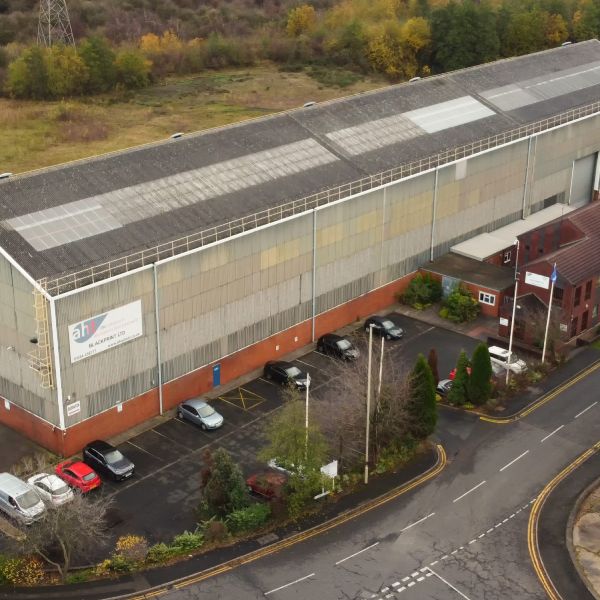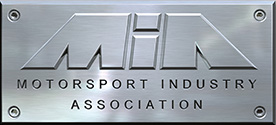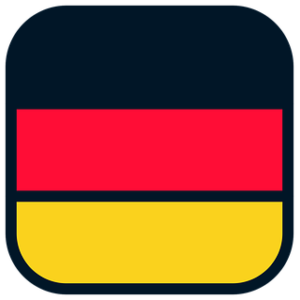Shotblasting Services
Alloy Heat Treatment have installed a vertical hanger blast facility. Parts are hung on manual Y-Track monorails for specific shotblast operations. AHT can accommodate a maximum product size of: 2600mm (h) x 1600mm (w) x 1600mm (d) and a maximum product weight of 800Kg. Shotblast is offered after heat treatment.
Our Shotblast Process
- CHROME 40 grade stainless steel blasting media
- A uniform “silvery grey” appearance for aluminium products
- We can provide shotblasting as a stand-alone service or an auxilary process
- Shotblast is offered after heat treatment
- Shotblast is carried out after the dye-pen process
rapid turn round times available
Alloy Heat Treatment have installed a vertical hanger blast facility. Parts are hung on manual Y-Track monorails for specific shotblast operations. AHT can accommodate a maximum product size of: 2600mm (h) x 1600mm (w) x 1600mm (d) and a maximum product weight of 800Kg.

What Is Shotblasting?
Shotblasting is a method used in metallurgy to clean, strengthen, or polish metal parts. It involves firing a stream of abrasive particles, called shot, at the surface of the metal using a machine called a shot blaster. The shot is propelled by compressed air or by a wheel that throws the shot at the metal surface. This abrasive treatment method uses a device similar to a spinning wheel to centrifugally accelerate shot-like material and blast it against a surface.
Applications Of Shotblasting
Shot blasting can be used to remove contaminants, such as rust or paint, from the surface of the metal. It can also be used to strengthen the metal by work hardening the surface. This is done by bombarding the surface with the abrasive shot, which deforms and compresses the metal, increasing its density and strength. Shot blasting can also be used to polish the surface of the metal, giving it a smooth, shiny finish.
Shot blasting is often used in the automotive, aerospace, and construction industries to clean and strengthen metal parts. It is also used in the marine industry to remove barnacles and other marine growth from ship hulls. In addition, shot blasting is used in the production of various consumer goods, such as appliances and sporting goods, to give them a smooth, finished appearance.
Shotblast Resources
Advantages Of Shotblasting
There are several advantages to using shot blasting in metal fabrication and finishing. It is a relatively fast and efficient process, and it can be used to clean and finish a wide range of metal surfaces. It is also relatively inexpensive, as it does not require the use of chemicals or other hazardous materials.
Disadvantages Of Shotblasting
There are also some potential drawbacks to shot blasting. The abrasive nature of the shot can cause damage to delicate or thin metal parts, and it can generate a significant amount of dust and debris. Proper protective equipment, such as respirators and eye protection, must be worn by those operating the shot blaster to avoid injury.
There are several types of shot that can be used in shot blasting, including steel shot, aluminium oxide, and glass beads. The type of shot used depends on the material being blasted and the desired finish. For example, steel shot is often used to remove contaminants from steel surfaces, while aluminium oxide is often used to polish non-ferrous metals such as aluminium or brass.
Shotblasting: Blogs, News & Resources
We have a list of helpful blogs on the subject of Shotblasting, feel free to search our knowledge base and our blogs to familiarise yourself with the processes we undertake during the Shotblast service.
Blogs:
Aluminium Alloy Surface Preparation: Shotblasting in Heat Treatment
Shotblasting FAQ’s
Using a leading heat treatment company such as AHT to take care of your shotblasting needs has numerous advantages to attempting it in-house, including limited risk, resources and the professional equipment we have on offer to be able to see projects go from start to finish.
Alloy Heat Treatment have installed a vertical hanger blast facility. Parts are hung on manual Y-Track monorails for specific shotlast operations. AHT can accommodate a maximum product size of: 2600mm (h) x 1600mm (w) x 1600mm (d) and a maximum product weight of 800Kg.
AHT can provide shotblasting as a stand-alone service or an auxiliary process post heat treatment, with rapid turn round times available.
Yes. If we heat treat a product, shotblast is offered after heat treatment.
If a product requires dye pen, this is required to be carried out prior to shotblasting, shotblasting before dye pen will cover any discontinuities.
Shotblasting is a surface preparation technique that uses high-speed particles, known as shots, to clean, descale, remove rust, and provide a uniform texture on metal surfaces. It helps to improve adhesion for coatings, enhance surface finish, and eliminate contaminants.
Shotblasting is effective on various materials, including metals like steel, iron, aluminium, and alloys. It can also be used on non-metallic materials such as concrete, stone, and composites, depending on their structural integrity and requirements.
Shot size selection is critical in shotblasting as it determines the impact energy and the resulting surface finish. Coarser shots are used for heavy-duty cleaning and removal of thicker coatings, while finer shots are suitable for achieving smoother finishes on delicate surfaces.
Yes, shotblasting can be customised to achieve specific surface roughness requirements. The shot type, size, velocity, and the duration of the blasting process can be adjusted to achieve the desired roughness profile, ranging from a light texture to a more aggressive profile.
Shotblasting can be adapted for sensitive or fragile components by selecting appropriate shot materials and adjusting process parameters to minimise the impact energy. Special care is taken to avoid distortion, warping, or damage to the components during the blasting process.
Yes, shotblasting can be employed for both pre-treatment and post-treatment of metal components. It is commonly used before coating applications, welding, machining, or further heat treatment processes to ensure a clean and properly prepared surface.
Safety is crucial during shotblasting operations. Operators should wear appropriate personal protective equipment (PPE) provided such as goggles, gloves, and protective clothing. Adequate ventilation and dust control measures must be in place to minimise exposure to airborne particles.
Shotblasting is considered a cost-effective surface preparation method due to its efficiency, speed, and ability to handle large volumes of components. It helps reduce labour-intensive manual cleaning processes and ensures consistent and reliable results.








